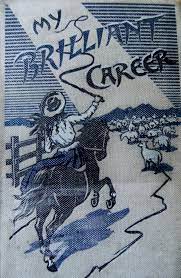Hovering by Rhett Davis
Hovering is Australian author Rhett Davis’ first novel.
The story is set in a made-up city called Fraser which is an enhanced version of Geelong, an actual water-front city about an hour’s drive from Melbourne. In this story Melbourne doesn’t exist and Fraser has expanded around Port Phillip Bay (where Melbourne would be) and inland to the mountains. The city’s landmarks are almost recognisable as real places in Geelong, while casual references to street names that exist as places in the Western District of Victoria gave me jolt after jolt of recognition.
The story is set in the near future with the city of Fraser having a unique feature that no one could ever have predicted, having become a tourist destination for people who want to see the phenomena of the city’s streets, buildings and public areas constantly shifting to a different location of the town. Every morning people wake up to find that their house, workplace, shopping centre, sporting ground, school and other places have been relocated, and that streets and roads have changed to go in the wrong direction, causing continual traffic jams. No one knew how or why the changes occurred.
The main characters are Lydia, her teenage son George and Lydia’s sister, Alice, who had recently mysteriously returned to the family home in Fraser after years of living overseas. Lydia and Alice’s retired parents had been cruising around the artificial islands in the Pacific for years (real islands having disappeared into the sea due to climate change).
Lydia had never left Fraser but Alice’s unsettled nature had made her a continual traveller. The sisters clearly resented each other and had little tolerance for their differences.
George refused to speak, but he managed to express himself clearly to those who listened. He was the most emotionally balanced person in his family, and was extraordinarily ‘woke’ or politically correct in an almost inspirational way (in some cases people who are so politically correct can be more detrimental to their causes than helpful).
I wondered if the constant changes going on in Fraser might have been an allegory for Australia, or even of this district’s history. Before British settlement the traditional owners of the area of Geelong were the Wadawurrung people of the Kulin nation. Geelong quickly grew into a town with outlying farms expanding further and further out, and this book made me realise that the Wadawurrung people whose ancestors had lived in the district for 25,000 years must have felt extremely displaced very quickly.
George’s character was the most accepting of the constant changes in Fraser, presumably because he was young and had never known anything different. In contrast, Lydia hid herself away, burying herself in work and playing an online game in a world that had become more real to her than her own. Alice expressed herself through her controversial art.
The story was sometimes told from the point of view of one of the characters, but other parts of the story were told through texts, or alert messages sent by the government. Other parts of the story are told by trending tweets, or stories written by journalists and intercepted HTML code. I found some of these styles to be disorienting, although no doubt that was the author’s intention.
The characters were too cold for me to care about, but I found myself thinking about the displacement of Aboriginal people after European settlement in Australia and climate change when I should have been thinking about other things (work). The unpublished manuscript of Hovering won the Victorian Premier’s Literary Award in 2020.









Recent Comments